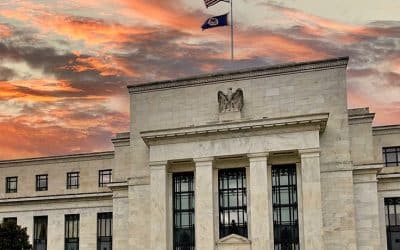MAPFRE AM analyzes the banking sector and urges caution in the face of turbulence

Redacción Mapfre
Cristina Benito Ayuso, director of equity investments at MAPFRE AM
The situation we find ourselves in is different from that experienced in the 2007-2008 financial crisis. In the last 10 or 15 years, banking management has improved significantly, as have regulatory requirements. Banks are now much better capitalized than before and have healthier balance sheets.
However, the crisis of confidence triggered first by the collapse of Sillicon Valley Bank and the Credit Suisse crisis shortly thereafter has caused high volatility in the market, and the Stoxx 600 Bank index has corrected 15% since the peak at the end of February, trimming the sector's progress in the year to date to just 3%. We would currently maintain a cautious position with respect to the banking sector due to recent events.
Central Banks have conveyed a message of calm to the markets, continuing with their roadmap of successive rate hikes to control inflation, while guaranteeing that they will provide banks with liquidity as required. Even so, the market is still paying attention to those banks it regards as the most vulnerable, and any news at all can trigger a selloff, as we saw last week after Deutsche Bank's amortization of two Tier 2 issues for $1.5 billion. The events of the last month have driven the risk premium for the sector north.
As far as earnings go, we believe that in the first part of the year they will be very positive, given that they’ll continue to reflect the repricing of assets, while the repricing of liabilities won’t come into play until the second half.
We expect the story of improving margins to peak in the first half of the year and then cease to be relevant in the second half for a number of reasons. First, the Euribor 3M has fallen significantly and estimates for the coming years have been reduced: from 4% to 3.2% for 2023 and from 3.4% to 2.8% for 2024.
Banks also will start to proactively offer long-term deposits in the search for more stable financing that avoids liquidity problems, considering the unprecedented rate at which deposits were withdrawn from SVB. Pressure on deposit costs will come from two directions: 1) the increase in deposit betas as banks seek out more stable long-term financing; 2) the migration of client deposits in search of better yields.
Finally, the cost of wholesale financing will also increase structurally due to growing concerns over liquidity.
All of the foregoing means an increase in the cost of equity in the bank sector and a drop in valuations. We would maintain a cautious position against the sector, favoring the most defensive banks, with a focus on retail banking, capacity to deliver in terms of ROE and a sustainable shareholder remuneration policy.



